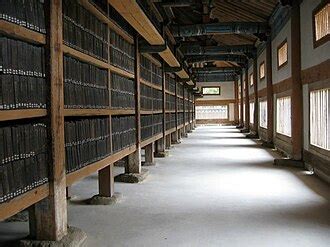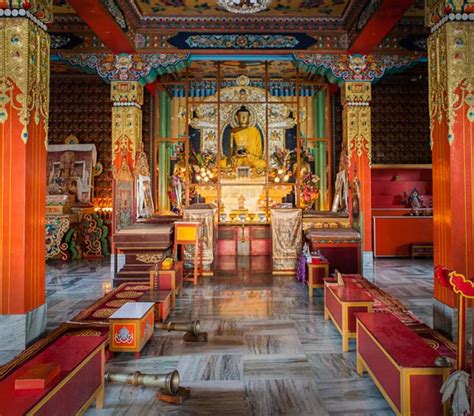buddhism in recently excavated texts in china Archaeologists have spent several months excavating the site in downtown Chengdu, capital of China’s Sichuan Province, revealing the remains of Fugan Temple, a once . Shop the small-framed, big-digging John Deere 26G Compact Excavator at Van Wall Equipment, the Midwest's clear first choice for over 70 years.CATERPILLAR 300.9D Excavators For Sale . Mini (up to 12,000 lbs) .
0 · The Chinese Buddhist Canon and Other Buddhist Texts
1 · Sacred Resurgence: Revitalizing Buddhist Temples in Modern
2 · Highland Inscriptions in Buddhist China
3 · Buddhism in China: Past, Present and Future
4 · Buddhism in China: Collected Papers of Erik
5 · Archaeologists in China Unearth Sutra Translation by Tang
6 · Archaeologists in China Recover Over 1,500 Buddhist Artifacts
7 · (Re
8 · (PDF) Recovering Buddhism in Modern China, edited by Jan
9 · (PDF) Buddhist Archaeology in Republican China: a New
Recommended for all soils. Built in backfill blade that enables backfilling and compaction with one attachment. Installs in place of the bucket using standard factory pins. Self-cleaning design. .
The next three chapters examine aspects of Buddhism under Mao; one learns of the discovery and peregrinations of a skull relic of Xuanzang, efforts to formulate a Buddhism .
Archeologists working at an excavation at the Tuyugou Grottoes in Xinjiang Uyghur Autonomous Region, northwest China, have announced the discovery of a large .
An image of Tangut civilization thereby created is detached from historical reality as it emerges from the excavated texts, which reveal an overwhelming domination of Buddhist materials over .BUDDHIST ARCHAEOLOGY IN REPUBLICAN CHINA 193 copies called attention to elaborate Buddhist narrative; vignettes executed with excitement and spontaneity; donor portraits of Silk . Archaeologists have spent several months excavating the site in downtown Chengdu, capital of China’s Sichuan Province, revealing the remains of Fugan Temple, a once .Sometimes steles are se-creted in caves or other hidden sites, usually with the goal of text preservation, such as the enormous Buddhist project at Fangshan 房山.2 In addition, there are .
The Chinese Buddhist Canon and Other Buddhist Texts
Buddhism in China is designed to be useful as well as comprehensive and aesthetically appealing. Not only is the collection thoroughly indexed, but the papers within it are now .
Buddhism in China faces a severe crisis, but it still has a solid foundation, built over 2,000 years. As long as we can identify the inheritance and recover the original inspiration, Chinese . In response to the state of Buddhist temple construction in China in the decades following the Taiping Rebellion, Professor Gregory Adam Scott, a specialist in modern .
Subsequently, translation into Chinese created what is known as the Chinese Buddhist canon, which was and still is normative in Japan, Korea, and Vietnam, but other societies, especially .The next three chapters examine aspects of Buddhism under Mao; one learns of the discovery and peregrinations of a skull relic of Xuanzang, efforts to formulate a Buddhism compatible with Marxism, and an account of the devastation of temple Buddhism in Suzhou.
Sacred Resurgence: Revitalizing Buddhist Temples in Modern
Archeologists working at an excavation at the Tuyugou Grottoes in Xinjiang Uyghur Autonomous Region, northwest China, have announced the discovery of a large fragment of ancient text believed to be a copy of the Mahaprajnaparamita Sutra, translated into Chinese by the renowned Tang dynasty (618–907) Buddhist monk, scholar, and traveler Xuanzang.
An image of Tangut civilization thereby created is detached from historical reality as it emerges from the excavated texts, which reveal an overwhelming domination of Buddhist materials over the so called "secular" texts.BUDDHIST ARCHAEOLOGY IN REPUBLICAN CHINA 193 copies called attention to elaborate Buddhist narrative; vignettes executed with excitement and spontaneity; donor portraits of Silk Road officials possessing great historical value; and complete icon installations preserved untouched since the Tang—these are just a few of the features that Zhang . Archaeologists have spent several months excavating the site in downtown Chengdu, capital of China’s Sichuan Province, revealing the remains of Fugan Temple, a once famous Buddhist site that flourished from the Eastern Jin dynasty (317–420) to the Southern Song dynasty (1127–1279).Sometimes steles are se-creted in caves or other hidden sites, usually with the goal of text preservation, such as the enormous Buddhist project at Fangshan 房山.2 In addition, there are multi-sided Buddhist pillars that include a variety of writings on their surfaces, in-cluding “spells” (dhāraṇī texts) or scripture passages and historical records.
Highland Inscriptions in Buddhist China
Buddhism in China is designed to be useful as well as comprehensive and aesthetically appealing. Not only is the collection thoroughly indexed, but the papers within it are now supplied with in-line Chinese characters where the originals had only glossaries or no characters at all.Buddhism in China faces a severe crisis, but it still has a solid foundation, built over 2,000 years. As long as we can identify the inheritance and recover the original inspiration, Chinese Buddhism can certainly flourish anew and illuminate the human world. To be .
In response to the state of Buddhist temple construction in China in the decades following the Taiping Rebellion, Professor Gregory Adam Scott, a specialist in modern Chinese history, has compiled and analyzed an extensive collection of local gazetteers.Subsequently, translation into Chinese created what is known as the Chinese Buddhist canon, which was and still is normative in Japan, Korea, and Vietnam, but other societies, especially Tibet and the Tangut empire, reacted differently by undertaking translations.
The next three chapters examine aspects of Buddhism under Mao; one learns of the discovery and peregrinations of a skull relic of Xuanzang, efforts to formulate a Buddhism compatible with Marxism, and an account of the devastation of temple Buddhism in Suzhou.
Archeologists working at an excavation at the Tuyugou Grottoes in Xinjiang Uyghur Autonomous Region, northwest China, have announced the discovery of a large fragment of ancient text believed to be a copy of the Mahaprajnaparamita Sutra, translated into Chinese by the renowned Tang dynasty (618–907) Buddhist monk, scholar, and traveler Xuanzang.An image of Tangut civilization thereby created is detached from historical reality as it emerges from the excavated texts, which reveal an overwhelming domination of Buddhist materials over the so called "secular" texts.BUDDHIST ARCHAEOLOGY IN REPUBLICAN CHINA 193 copies called attention to elaborate Buddhist narrative; vignettes executed with excitement and spontaneity; donor portraits of Silk Road officials possessing great historical value; and complete icon installations preserved untouched since the Tang—these are just a few of the features that Zhang . Archaeologists have spent several months excavating the site in downtown Chengdu, capital of China’s Sichuan Province, revealing the remains of Fugan Temple, a once famous Buddhist site that flourished from the Eastern Jin dynasty (317–420) to the Southern Song dynasty (1127–1279).

Sometimes steles are se-creted in caves or other hidden sites, usually with the goal of text preservation, such as the enormous Buddhist project at Fangshan 房山.2 In addition, there are multi-sided Buddhist pillars that include a variety of writings on their surfaces, in-cluding “spells” (dhāraṇī texts) or scripture passages and historical records.Buddhism in China is designed to be useful as well as comprehensive and aesthetically appealing. Not only is the collection thoroughly indexed, but the papers within it are now supplied with in-line Chinese characters where the originals had only glossaries or no characters at all.Buddhism in China faces a severe crisis, but it still has a solid foundation, built over 2,000 years. As long as we can identify the inheritance and recover the original inspiration, Chinese Buddhism can certainly flourish anew and illuminate the human world. To be . In response to the state of Buddhist temple construction in China in the decades following the Taiping Rebellion, Professor Gregory Adam Scott, a specialist in modern Chinese history, has compiled and analyzed an extensive collection of local gazetteers.
Buddhism in China: Past, Present and Future

Buddhism in China: Collected Papers of Erik
Archaeologists in China Unearth Sutra Translation by Tang
50 P-Tier Compact Excavator. Net Power: 26.8 kW (35.9 hp) Max. Digging Depth: .
buddhism in recently excavated texts in china|(Re